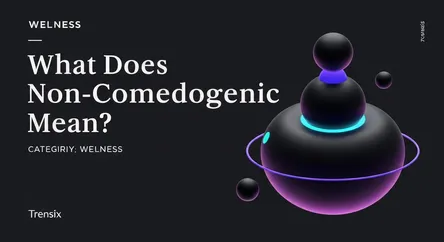Wellness
What Does Non-Comedogenic Mean?

Learn what non-comedogenic means and why it's a key term in skincare for preventing clogged pores and achieving clearer skin.
What is it?
Non-comedogenic is a term used to describe skincare and makeup products formulated in a way that they are not likely to cause pore blockages (comedones) and lead to acne. A comedo is the initial bump that forms when a pore becomes clogged with excess oil, dead skin cells, and debris, which can appear as a blackhead or whitehead. Therefore, products labeled as non-comedogenic are specifically designed to avoid this issue, making them a staple for those looking to maintain clear skin. While the term is widely used, it is not officially regulated, so results can vary from person to person.
Why is it trending?
The trend towards using non-comedogenic products is driven by a growing consumer awareness of cosmetic ingredients and their impact on skin health. As people become more educated about skincare, they actively seek out products that will not worsen skin issues like acne. This is particularly important for individuals with oily, combination, or acne-prone skin types who are more susceptible to clogged pores. The popularity of "clean beauty" and minimalist skincare routines also contributes to this trend, emphasizing products with gentle, effective formulations that support the skin's natural functions without causing congestion.
How does it affect people?
Using non-comedogenic products can significantly benefit people by helping to prevent the formation of new breakouts. For those with oily or acne-prone skin, switching to non-comedogenic cleansers, moisturizers, and makeup can lead to fewer pimples, blackheads, and whiteheads. This helps in achieving a smoother skin texture and a more radiant complexion. By avoiding pore-clogging ingredients, the skin can function more effectively, and other skincare ingredients can penetrate better. It's a foundational step for anyone looking to manage acne or simply maintain clear, healthy-looking skin.